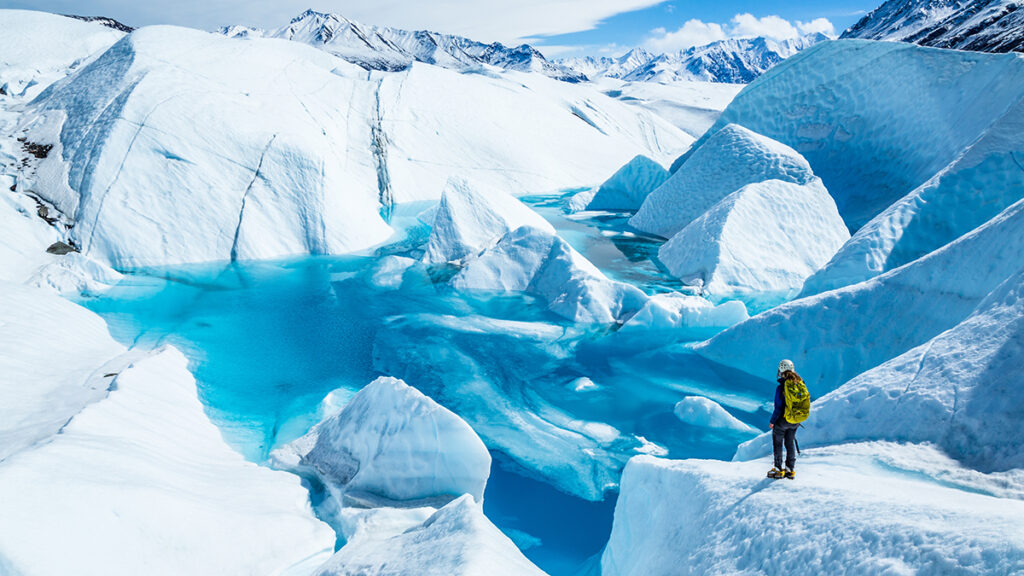Why Fish Lovers Need to Visit Alaska
For the fish, of course, and the state’s vast, beautiful wilderness.
Apr 24, 2024
Eating a specific food at the source usually is the quaint luxury pursuit of going to Tuscany or Modena for great, innovative Italian food, or Lyon for the finest French food, or India for the real, fragrant, textured Indian cuisine. (Eat at the side of the road stalls for the mind blowingly-good dishes, that’s my tip.) But to eat great fish at the source, you basically have to go to the middle of the ocean.
Which is possible, and I've done that. I've eaten raw tuna on a boat in the Atlantic Ocean, where we had to wait for it to cool down on ice before we could eat it (because it's warm when it comes out of the water). But that's not an everyday opportunity for most of us.
But, enticingly, you can go to some beautiful spots across the globe where some of the world’s most delicious, nutritious, cleanest, and sustainably managed fish comes from.
Like Alaska.

Alaska is where the true marriage of exotic, adventurous travel and eating arguably the world’s freshest fish at its source is consummated. The Bering Sea in the North Pacific, between Siberia and Alaska — OK, we’re back in the middle of an ocean again, but, you know, if you can get there, go — is home to the freshest (and coldest water) cod and halibut you’ll ever eat. And the Aleutian Islands, which run across the Bering Sea like a chain across a driveway, are home to the illustrious Golden King crab and richly flavorful Dungeness crab.
Back on the continent, a trip to Prince William Sound (a very worthy and recommended destination even if you hate fish — it’s just a great, unspoiled part of the United States) is where you’ll eat Copper River King salmon, plain old Copper River Sockeye salmon, and the apparently even less grand in aquatic social status Sockeye salmon.
Suffice to say, this is ground zero for salmon.
According to the Alaska tourism board, which surely knows, Prince William Sound “encompasses 10,000 square miles of protected waterways, islands, fjords, and around 150 glaciers.” It’s like an American Norway. The best restaurants in the region are, unsurprisingly, two seafood places, both in the town of Whittier: Swiftwater Seafoods and Wild Catch Cafe. No restaurants with a Michelin star reside here, only because nobody is trying to earn one. But if the French company that’s more famous for its restaurant anointments than its tires were to just award its stars for great seafood, it’d be raining them over the Sound.

In Southeast Alaska, the portion that bends under Canada, east of the capital Anchorage, you’ll find Silver (Coho) salmon, King (Chinook) salmon, and halibut, as well as some more, presumably off course, Sockeye salmon. You can enjoy most of these, and other seafood, at Salt and Twisted Fish Company, both in Juneau.
Alaska is the least-populated and least-visited state in the union. It’s also by far the biggest. If it was a country, it’d be the 18th largest in the world — nearly tied with Iran, and three times the size of France. Texas, which likes to puff out its chest and talk about how big things are there, would get lost in Alaska. Twice. So would California.
But Alaska is also the environmentally purest state, its vast wildernesses as clean and ecologically preserved as the Lower 48 was in the time before the European settlers arrived. Its internal remoteness is, to understate, a challenge to travel to and so wild that it can be seriously dangerous to do so. Two of the least-visited national parks in America are in Alaska: Kobuk Valley National Park and Gates of the Arctic; Wrangell-St. Elias National Park is the largest in America yet is the eighth least visited. These parks are also very difficult to get to.

And if you want really remote fishing, this is the state to go to: It makes those highfalutin Montana rivers look like fishing off the pier in Atlantic City. Try Icy Bay Lodge, the ne plus ultra of extreme remote fishing. You first fly to an airstrip in the wilderness, then, using Swedish-developed military vehicles — I’m not kidding you — drive through old logging roads typically submerged in several feet of water, then hop on a skiff and power through marshes, arriving at a spot from where you pick up ATVs to traverse rough landscape and then along a beach to a fishing spot where you are pretty much guaranteed to not see any other humans. The fish are all yours, and, as you’d expect after all that, abundant. You can catch and release as many as you want, and keep four to eat. (Four’s enough, right?)
Now that we’ve whetted your appetite for some of the greatest, freshest, most delicious seafood on the planet, you’re probably ready to make the trek to the 49th state. But if you can’t get to Alaska, or at least not tomorrow, Vital Choice can get Alaska (at least all the aforementioned fish) to you — possibly tomorrow, but certainly within a few days at the most.
And, God, is it all good!







